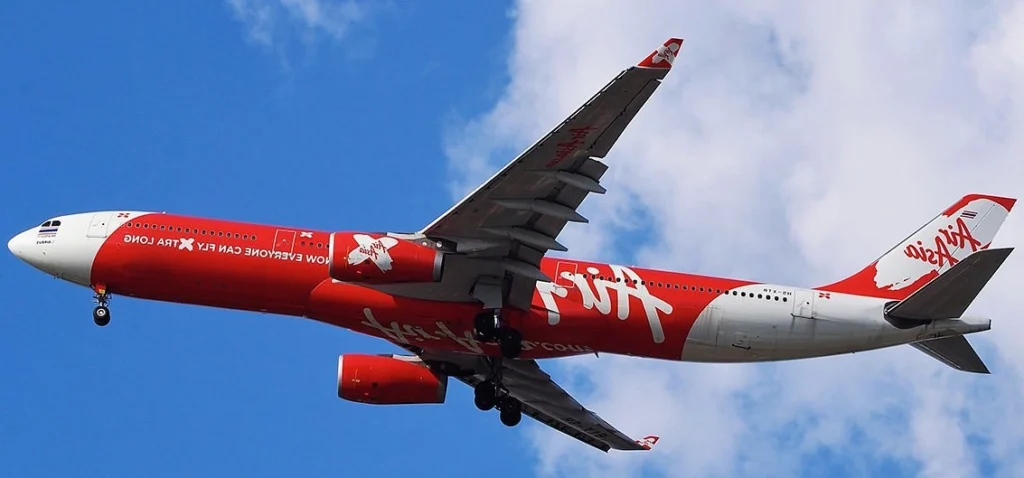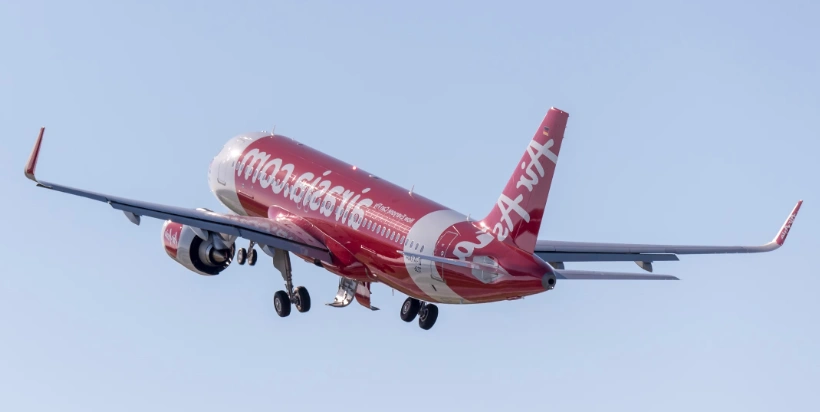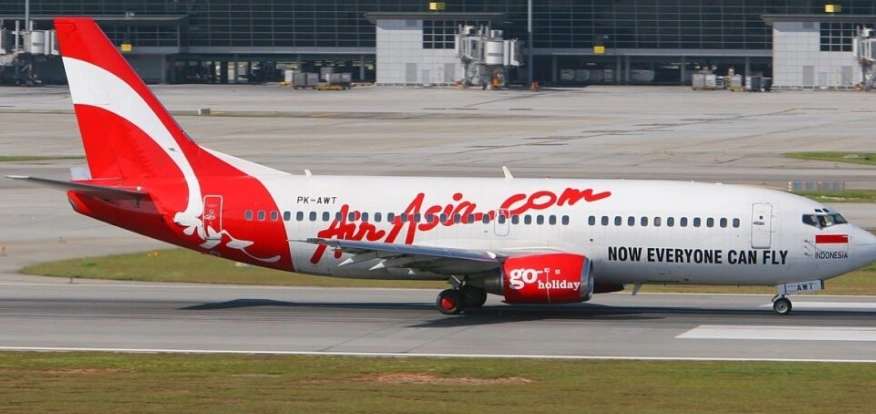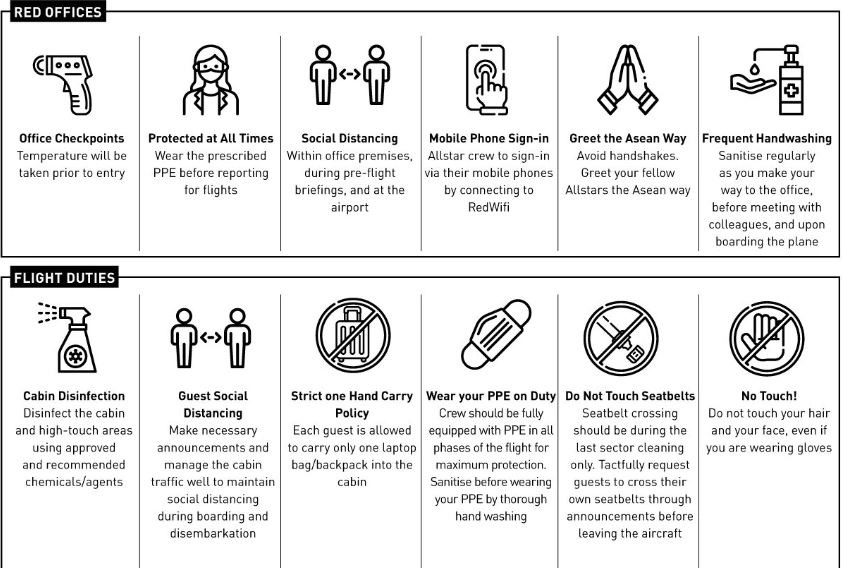
AirAsia Flight Malaysia offers seamless and affordable air travel solutions within Malaysia and beyond. With its user-friendly online platform, travelers can easily book flights to a multitude of destinations across the country. Whether you’re embarking on a business trip, planning a family vacation, or seeking a solo adventure, AirAsia Flight Malaysia ensures a smooth booking experience tailored to your preferences and budget. From the vibrant city of Kuala Lumpur to the tranquil shores of Langkawi, AirAsia connects you to the heart of Malaysia with its extensive network of domestic routes. Renowned for its commitment to offering excellent value for money, AirAsia makes flying accessible to all, allowing travelers to explore the beauty and diversity of Malaysia without breaking the bank. Whether it’s a short domestic journey or an international escapade, trust AirAsia Flight Malaysia for a hassle-free booking experience that puts you in control of your journey.
Table of Contents
A. Brief Overview of AirAsia
AirAsia, headquartered in Malaysia, is one of the leading low-cost carriers in the world. Established in 1993 and officially launched in 1996, AirAsia has rapidly expanded its operations, offering both domestic and international flights. Founded by Tony Fernandes and Datuk Kamarudin Meranun, AirAsia started with just two aircraft and grew to become a formidable player in the aviation industry.
Initially operating solely in Malaysia, AirAsia has since diversified its reach, establishing subsidiaries in various countries, including Thailand, Indonesia, the Philippines, India, and Japan. With its innovative business model focusing on cost efficiency, AirAsia has revolutionized air travel, making it more accessible to a broader demographic.
B. Importance of AirAsia in the Aviation Industry
AirAsia’s impact on the aviation industry cannot be overstated. It has played a significant role in democratizing air travel, particularly in Southeast Asia, by offering affordable fares and expanding connectivity to previously underserved destinations. This has not only facilitated tourism but has also stimulated economic growth in the regions it serves.
1. Affordable Travel:
AirAsia’s low-cost model has made air travel more affordable for millions of passengers. By eliminating unnecessary frills and focusing on operational efficiency, AirAsia has been able to offer tickets at a fraction of the cost of traditional carriers. This affordability has not only enabled leisure travel but has also facilitated business trips, allowing companies to expand their reach.
2. Regional Connectivity:
AirAsia has been instrumental in enhancing connectivity within Southeast Asia and beyond. Its extensive route network links major cities, secondary hubs, and even remote destinations, fostering economic development and cultural exchange. By providing convenient and affordable air travel options, AirAsia has helped promote tourism, trade, and investment in the regions it serves.
3. Innovation and Disruption:
AirAsia’s success has spurred innovation and competition in the aviation industry. Its disruptive business model has forced traditional carriers to reevaluate their strategies and pricing structures, ultimately benefiting consumers. Furthermore, AirAsia’s emphasis on digital technology and e-commerce has set new standards for customer service and operational efficiency in the airline industry.
In conclusion, AirAsia has emerged as a trailblazer in the aviation industry, challenging conventional norms and reshaping the way people travel. Its commitment to affordability, accessibility, and innovation has not only made air travel more convenient but has also contributed to the socioeconomic development of the regions it serves. As AirAsia continues to expand its global footprint, its influence on the aviation landscape is poised to grow even further, making it a pivotal player in the future of air travel.
AirAsia’s Presence in Malaysia

AirAsia’s footprint in Malaysia extends far beyond its headquarters in Kuala Lumpur. As the country’s largest airline, AirAsia operates a comprehensive network of domestic flights, connecting major cities like Penang, Langkawi, and Kota Kinabalu. Serving as a vital link for both domestic and international travel, AirAsia facilitates tourism, business activities, and cultural exchange. Its extensive route network not only promotes exploration of Malaysia’s diverse landscapes but also contributes significantly to the nation’s economic growth. Through its innovative business model and unwavering commitment to customer satisfaction, AirAsia continues to shape Malaysia’s aviation landscape and enhance its global reputation as a premier travel destination.
A. Founding and History
AirAsia’s roots trace back to Malaysia, where it was founded in 1993 by Tony Fernandes and Datuk Kamarudin Meranun. Originally established as a full-service airline, it faced significant challenges, including intense competition and financial difficulties. However, in 2001, Fernandes, with his vision of transforming AirAsia into a low-cost carrier, acquired the airline for a token sum of one ringgit and began its transformation.
Under Fernandes’ leadership, AirAsia underwent a remarkable turnaround, adopting a no-frills model aimed at providing affordable air travel to the masses. The airline’s inaugural low-cost flight from Kuala Lumpur to Langkawi marked the beginning of its ascent to prominence. Since then, AirAsia has continued to expand its domestic and international network, becoming synonymous with budget air travel in Malaysia and beyond.
B. Key Routes and Destinations within Malaysia
AirAsia operates an extensive network of routes within Malaysia, connecting major cities, tourist destinations, and remote regions. Some of the key routes include flights between Kuala Lumpur (its main hub) and Penang, Langkawi, Kota Kinabalu, Kuching, and Johor Bahru. Additionally, AirAsia serves secondary airports such as Subang, providing greater accessibility to passengers.
In addition to domestic routes, AirAsia also offers international flights departing from Malaysia to various destinations across Asia, Australia, the Middle East, and beyond. This comprehensive network not only caters to the needs of domestic travelers but also contributes significantly to Malaysia’s role as a regional aviation hub.
C. Contribution to Malaysia’s Tourism and Economy
AirAsia has been a driving force behind Malaysia’s tourism industry, facilitating travel both domestically and internationally. By offering affordable airfares, the airline has made it easier for both Malaysians and international visitors to explore the country’s diverse attractions, including pristine beaches, cultural heritage sites, and vibrant cities.
Moreover, AirAsia’s operations have had a substantial impact on Malaysia’s economy. The airline’s expansion has created job opportunities across various sectors, including aviation, hospitality, and tourism. Additionally, increased air connectivity has stimulated business activities and trade, fostering economic growth in regions served by AirAsia.
Furthermore, AirAsia’s success has positioned Malaysia as a key player in the global aviation market. The airline’s innovative business model and operational efficiency have garnered international recognition, enhancing Malaysia’s reputation as a hub for aviation excellence.
In summary, AirAsia’s presence in Malaysia spans its founding, extensive route network, and significant contributions to tourism and the economy. As a homegrown success story, AirAsia continues to play a pivotal role in connecting people, driving economic development, and promoting Malaysia as a premier travel destination.
AirAsia’s Flight Operations

AirAsia’s flight operations encompass a seamless blend of efficiency, convenience, and reliability. With a modern fleet predominantly comprised of Airbus A320 family aircraft, the airline ensures a comfortable and safe travel experience for passengers. Offering high frequency flights on popular routes within Malaysia and across Southeast Asia, AirAsia provides flexibility to travelers with diverse schedules. Onboard services such as refreshments, seat selection, and entertainment options enhance the overall journey experience. Through meticulous planning, adherence to safety protocols, and utilization of cutting-edge technologies, AirAsia consistently delivers exceptional flight operations, reinforcing its reputation as a leading low-cost carrier in the aviation industry.
A. Fleet Overview
AirAsia operates a modern and fuel-efficient fleet primarily consisting of Airbus A320 family aircraft. This includes variants such as the A320neo and A321neo, which offer improved fuel efficiency and passenger comfort. As of [current date], AirAsia boasts one of the largest Airbus fleets in the Asia-Pacific region, with hundreds of aircraft serving its extensive route network.
B. Frequency of Flights
AirAsia offers a high frequency of flights on many of its routes, providing passengers with flexibility and convenience. Particularly on popular routes within Malaysia and across Southeast Asia, AirAsia often operates multiple flights per day, allowing passengers to choose from various departure times to suit their schedules. This frequent flight schedule enhances connectivity and accessibility for travelers, whether they are flying for business or leisure purposes.
C. Services Provided Onboard
While AirAsia is a low-cost carrier, it offers a range of services onboard to enhance the passenger experience. These services may vary depending on the type of ticket purchased and the duration of the flight but typically include:
In-flight Refreshments: Passengers have the option to purchase a variety of snacks, meals, and beverages onboard, including hot meals, snacks, and refreshments.
Seat Selection: Passengers can choose their seats during the booking process, allowing them to select seats with extra legroom or seats located closer to the front of the aircraft for quicker disembarkation.
Entertainment Options: Some AirAsia aircraft are equipped with inflight entertainment systems, offering a selection of movies, TV shows, music, and games for passengers to enjoy during their flight.
WiFi Connectivity: AirAsia provides WiFi connectivity on select aircraft, allowing passengers to stay connected and access the internet inflight for a fee.
Duty-Free Shopping: Passengers have the opportunity to purchase duty-free items onboard, including cosmetics, fragrances, electronics, and souvenirs, at competitive prices.
Overall, AirAsia strives to provide a comfortable and enjoyable travel experience for passengers while maintaining its commitment to affordability and efficiency.
Safety Measures and Regulations airasia flight malaysia

Ensuring the safety of passengers and crew is paramount in the aviation industry, and AirAsia prioritizes stringent safety measures and adherence to regulatory standards. From compliance with international aviation regulations to the implementation of robust safety protocols, AirAsia maintains a steadfast commitment to operational excellence and passenger well-being. Through comprehensive pre-flight checks, ongoing training programs, and advanced safety technologies, AirAsia upholds the highest standards of safety to provide passengers with peace of mind throughout their journey.
A. Compliance with Aviation Regulations
AirAsia prioritizes compliance with aviation regulations set forth by regulatory authorities such as the International Civil Aviation Organization (ICAO), the Federal Aviation Administration (FAA), and respective civil aviation authorities in the countries where it operates. The airline ensures that its operations, procedures, and maintenance practices adhere to strict safety standards and regulatory requirements. This includes regular inspections, audits, and certifications to maintain airworthiness and operational safety.
B. Safety Protocols and Procedures
AirAsia implements rigorous safety protocols and procedures to safeguard the well-being of passengers and crew throughout all stages of flight. These protocols encompass various aspects, including pre-flight checks, aircraft maintenance, crew training, and emergency procedures. Prior to each flight, highly trained pilots and ground staff conduct comprehensive safety inspections to ensure the aircraft’s readiness for departure. Additionally, cabin crew members undergo recurrent training to handle various emergency scenarios effectively, including medical emergencies, onboard fires, and evacuations.
Moreover, AirAsia invests in advanced safety technologies and equipment to enhance operational safety. This includes state-of-the-art avionics systems, flight data monitoring, and safety management systems to proactively identify and mitigate potential safety risks. The airline also collaborates with industry partners, regulatory authorities, and safety organizations to stay abreast of emerging safety trends and best practices, continually refining its safety protocols to maintain the highest standards of safety and reliability.
C. Incident Response and Management
In the event of an operational incident or emergency, AirAsia has established robust incident response and management procedures to ensure swift and effective resolution. The airline maintains dedicated emergency response teams equipped with specialized training and resources to handle various types of emergencies, ranging from mechanical failures and adverse weather conditions to medical emergencies and security threats.
These response teams coordinate closely with relevant authorities, including air traffic control, airport authorities, and emergency services, to execute timely and coordinated responses to incidents. Additionally, AirAsia prioritizes open communication and transparency with passengers, providing timely updates and assistance throughout the incident resolution process to minimize disruptions and ensure passenger comfort and safety.
Furthermore, AirAsia conducts thorough post-incident investigations to identify root causes, assess operational procedures, and implement corrective measures to prevent recurrence. By fostering a culture of safety and continuous improvement, AirAsia demonstrates its unwavering commitment to maintaining the highest standards of safety and operational excellence for the benefit of its passengers and stakeholders.
| Section | Subsection |
| Overview of AirAsia | |
| Founding and History | |
| Key Routes and Destinations within Malaysia | |
| Contribution to Malaysia’s Tourism and Economy | |
| AirAsia’s Presence in Malaysia | |
| Founding and History | |
| Key Routes and Destinations within Malaysia | |
| Contribution to Malaysia’s Tourism and Economy | |
| AirAsia’s Flight Operations | |
| Fleet Overview | |
| Frequency of Flights | |
| Services Provided Onboard | |
| Safety Measures and Regulations | |
| Compliance with Aviation Regulations | |
| Safety Protocols and Procedures | |
| Incident Response and Management |
Conclusion:
AirAsia has undeniably transformed air travel, not only in Malaysia but also beyond, with its commitment to affordability, accessibility, and innovation. Since its inception in 1993, AirAsia has grown from a small airline with just two aircraft into one of the world’s leading low-cost carriers. Through its user-friendly online platform and extensive route network, AirAsia has made flying more accessible to a broader demographic, allowing travelers to explore Malaysia’s diverse destinations without breaking the bank.
Moreover, AirAsia’s impact extends beyond affordability, as it has played a pivotal role in enhancing regional connectivity, stimulating economic growth, and fostering cultural exchange. By offering high-frequency flights, innovative services onboard, and strict adherence to safety measures, AirAsia ensures a seamless and enjoyable travel experience for passengers.
As AirAsia continues to expand its global footprint and shape the future of air travel, its influence on the aviation industry remains profound. With its unwavering commitment to operational excellence and customer satisfaction, AirAsia is poised to remain a key player in the dynamic landscape of aviation, continuing to connect people, drive economic development, and inspire new possibilities in travel.
FAQ (Frequently Asked Questions) and Answers:
- How does AirAsia ensure affordability for passengers? AirAsia maintains its affordability by eliminating unnecessary frills and focusing on operational efficiency. By offering no-frills services and optimizing its cost structure, AirAsia is able to provide tickets at a fraction of the cost of traditional carriers.
- What destinations does AirAsia serve within Malaysia? AirAsia operates an extensive network of routes within Malaysia, connecting major cities such as Kuala Lumpur, Penang, Langkawi, Kota Kinabalu, Kuching, and Johor Bahru, among others. It also serves secondary airports to provide greater accessibility to passengers.
- How has AirAsia contributed to Malaysia’s tourism and economy? AirAsia has been instrumental in promoting Malaysia’s tourism industry by making travel more accessible and affordable for both domestic and international travelers. Additionally, its operations have created job opportunities and stimulated economic growth in various sectors, including aviation, hospitality, and tourism.
- What safety measures does AirAsia prioritize to ensure passenger well-being? AirAsia prioritizes compliance with aviation regulations, rigorous safety protocols and procedures, and advanced safety technologies to ensure passenger safety throughout all stages of flight. It also maintains dedicated incident response and management procedures to handle emergencies effectively.
- What sets AirAsia apart from traditional carriers in the aviation industry? AirAsia’s low-cost model, emphasis on affordability and innovation, and extensive route network distinguish it from traditional carriers. Its disruptive business model has forced competitors to reevaluate their strategies, ultimately benefiting consumers with more affordable and accessible air travel options.

